Reception for latest cohort of international scholars / Gallery walk highlights individual research projects

The latest cohort of Goethe Research Experience Program (GREP) fellows was treated to a special reception in mid-July to celebrate their research achievements. Now in its second year, the 2024 summer semester has brought together a record 23 distinguished international bachelor’s and master’s students from five different countries and 11 different universities.
The large number of participants and the diversity of research topics underscore just how successful the program has been in achieving its main goals: fostering international collaboration, promoting interdisciplinary research and supporting the future generation of academic leaders by providing exceptional research opportunities for outstanding students. From neuroscience and cardiology to astrophysics, from biotechnology and critical environmental challenges to political conflict and religious studies – GREP offers a program rich in both research and experience.
Welcoming the new cohort, Goethe University President Prof. Enrico Schleiff called on them to remember that during their two- to-six-months research stays, “you are here not only to learn but also to inspire and network. Your contributions will help shape the future of your respective fields and create lasting impact.” After presenting each participant with their fellowship certificate, Schleiff took the opportunity to meet with the scholars and learn more about their research.
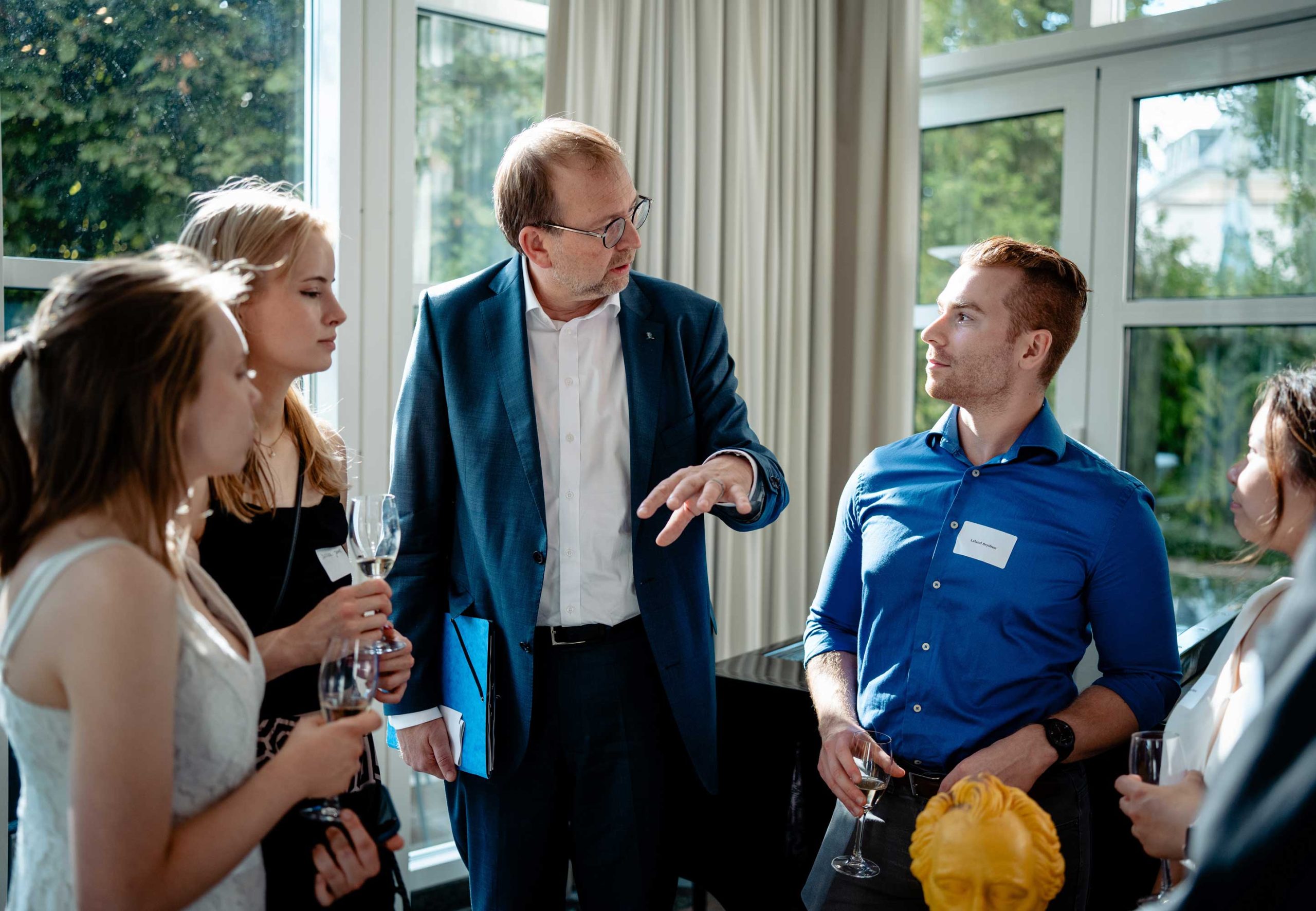
GREP fellow keynotes: 3-D models of brain tumors and a call for a new definition of modern slavery
The president’s welcome address was followed by two presentations given by GREP scholars Dana Venkert of Tel Aviv University’s Faculty of Medicine and João Gianecchini of University of São Paulo’s Law Faculty.
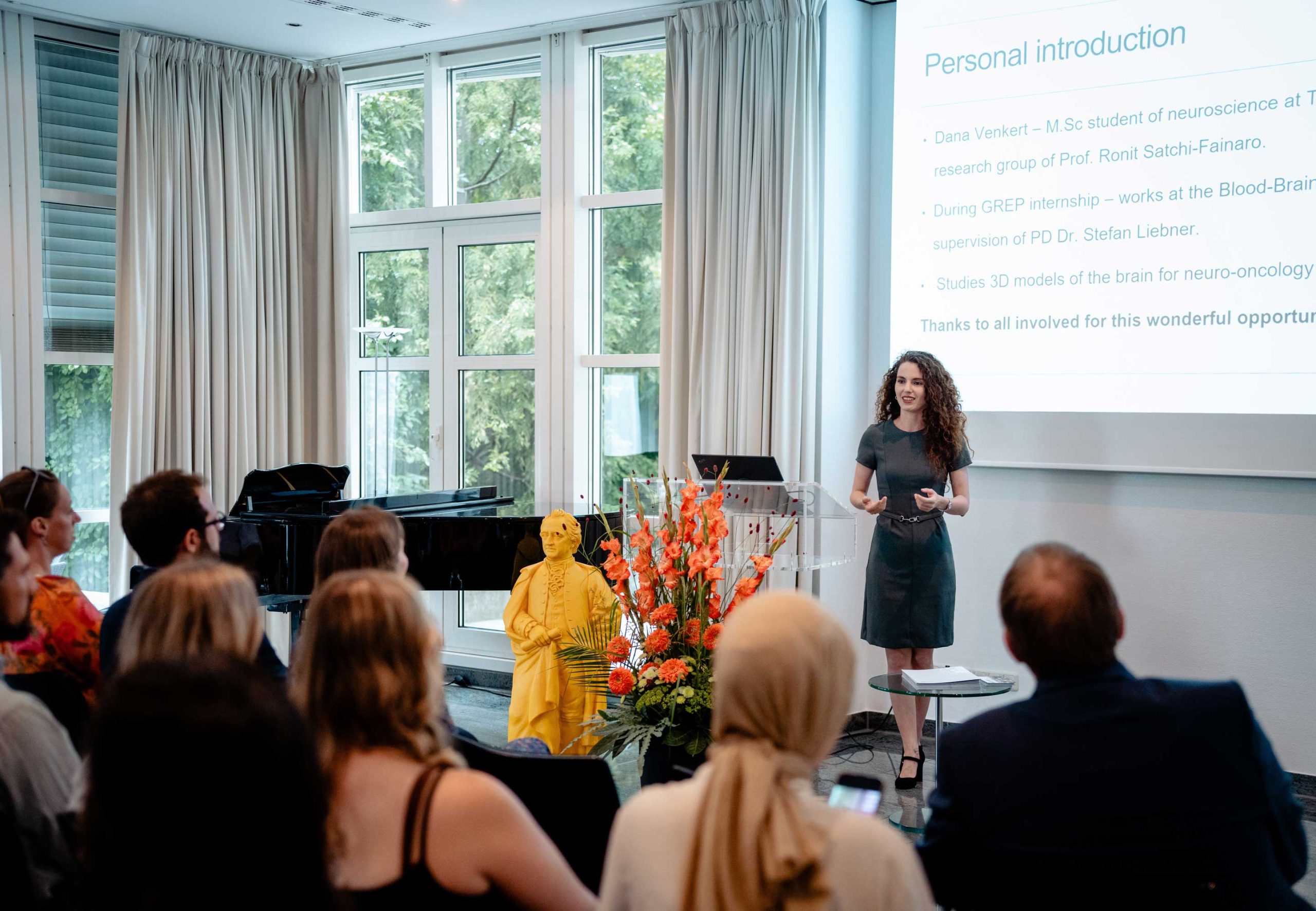
During her three-month stay at Goethe University, the neuroscience master’s student from Israel continued her research on the blood-brain barrier (BBB) under the supervision of PD Dr. Stefan Liebner. Specialized in biomedical engineering, Dana Venkert creates 3-D models of brain tumors, specifically in children. She explained the blood-brain barrier to the audience by saying that it is a unique mechanism and structure that controls what gets into our brains. This means, she continued, that it in some cases it also prevents us from getting drugs into the brain, limiting the ability to treat many diseases.
Because it is so complex, there have been two main ways to study the BBB, Dana Venkert added. The first, in vivo, not only has ethical issues, but also involves mice, which are very different from humans. Then there are 2-D cell cultures, she continued, which were used until about a decade ago, but are unable to replicate the complexity of the human body, including at the protein level. So she and her team have turned to more sophisticated 2-D imaging. These models use isolated cells from the mouse brain and mimic the BBB. “Using this model, we can label proteins to see how they behave, test the barrier to see its permeability, and analyze whether the model allows us to reproduce the properties.”
There is, however, a third model, said Dana Venkert. Using microfluidics, she told the audience, it is possible to create 3-D models that represent an entire matrix, which not only mimics the tissue but also allows researchers to isolate components. “We use collagen or we grow our own cells. And when left alone, they did what they do best: create.” The cells, she continued, created their own micro-vessels and formed hollow lumens, allowing researchers to observe their behavior. “Once we confirm the validity of this model, the possibilities are limitless, not only when it comes to drug testing, like seeing how cancer gets into the brain, but also to studying the interactions within this cell matrix.”

The second keynote was delivered by Brazilian Master’s student João Gianecchini from the Law Faculty of the University of São Paulo, whose research is supervised by Prof. Christoph Burchard and co-supervisor Finn-Lauritz Schmidt. Introducing the audience to his research topic – “Modern servitude: socially harmful behavior and layers of victimization of the exploitation of contemporary slavery” – he began by explaining his shock at learning that more than 50 million people worldwide are exploited in the context of modern slavery. “I wanted to understand better what that means.”
As a lawyer, he continued, his focus was naturally more on the criminal side of things, but he also sought to take a broader approach, combining the criminological and victimological frameworks. João Gianecchini then outlined his conceptual background, which is based on the three practices included in the term modern slavery: forced labor, human trafficking, as well as slavery and slaverylike practices. He further defined the latter as “the creation of a fictitious debt that a person cannot pay and as a result of which he or she is trapped in a long-term labor arrangement”. This definition, he continued, explains his preference for the term “modern servitude”: “Modern slavery is different from earlier slavery. We now have other means of coercion, both physical and psychological. That is why I am in favor of a new framework, because we need protection against servitude.”
While his research is ongoing, he told the audience that in corporate settings, it is moral practices that serve as an excuse for such criminal behavior. “The normative order is such that a corporate actor will impose a different set of values from those of society. Profits are the key objective, making it easier to deny the existence of victims of modern slavery.” What’s more, he continued, modern supply chains and their structure also make it easier to hide who has been exploited and how.
To gain further insight into the supply and demand dynamics, João Gianecchini also linked corporate demand for cheap labor and the desire to be at the forefront of global competition with the supply of vulnerable workers, suffer from among other things, poverty or identity discrimination. Adding another component to his already interdisciplinary research, he then conducted a comparison between the criminal law frameworks in Brazil and Germany, focusing not only on the text, but also on primary, secondary and tertiary levels of victimization. The questions guiding him, he said, were: What are the consequences of modern slavery? What are the harms? Who are the victims? Referring to his supervisor Prof. Burchard’s theory of criminal law and criminal justice based on the protection of fundamental human rights, he concluded by telling the audience he hopes his research will provide indications on how the criminal justice system should prevent, address and combat the practice of modern servitude.
Goethe University’s Faculty of Medicine: Fostering international expertise in soluble epoxide hydrolase
Following the keynotes, President Schleiff presented each fellow with the Award of the President for their successful participation in the program. The evening was then open for socializing and a gallery walk. Some of the thematic posters combined the research of two or more fellows from completely different countries and institutions. One example is that of Zhijie Li and Fatima Feyzanur Mete, both GREP fellows specializing in soluble epoxide hydrolase (sEH) and both supervised by Prof. Ingrid Fleming of Goethe University Frankfurt’s Faculty of Medicine.
The Chinese fellow from the Huazhong University of Science and Technology already arrived in Frankfurt in May and is staying for a total of six months. Now in the second year of his Master’s studies, Zhijie Li found out about GREP through an internet search. So did Fatima Feyzanur Mete from Istanbul Medipol University, although this is her second time in Germany. “I am always looking for opportunities like this. GREP was the perfect fit: a funded program that allows me to focus on my studies.” The Turkish scholar only arrived in early July and will leave at the end of August after the summer break. GREP’s flexible research stays have allowed these two fellows to meet in Prof. Ingrid Fleming’s lab, where each is studying a different aspect of the sHE enzyme.
Fatima Feyzanur Mete explains: “We have epoxygenated fatty acids in our body that provide us with energy and have other beneficial effects, including anti-inflammatory. But the sHE enzyme breaks them down and we lose this effect.” While Zhijie Li focuses on proteolysis targeting chimeras (PROTACs) – i.e. molecules that can remove specific unwanted proteins – and their ability to modify these proteins to promote their rapid degradation, the scholar from the Istanbul Medipol University focuses on sEH in the development of cardiac lymphatics.
Given her short stay, Fatima Feyzanur Mete says she would be happy to get good results before returning to her studies at home, where she has two more years of medical school. As for Zhijie Li, his time in Germany so far has been so amazing that he is even considering returning for his PhD.
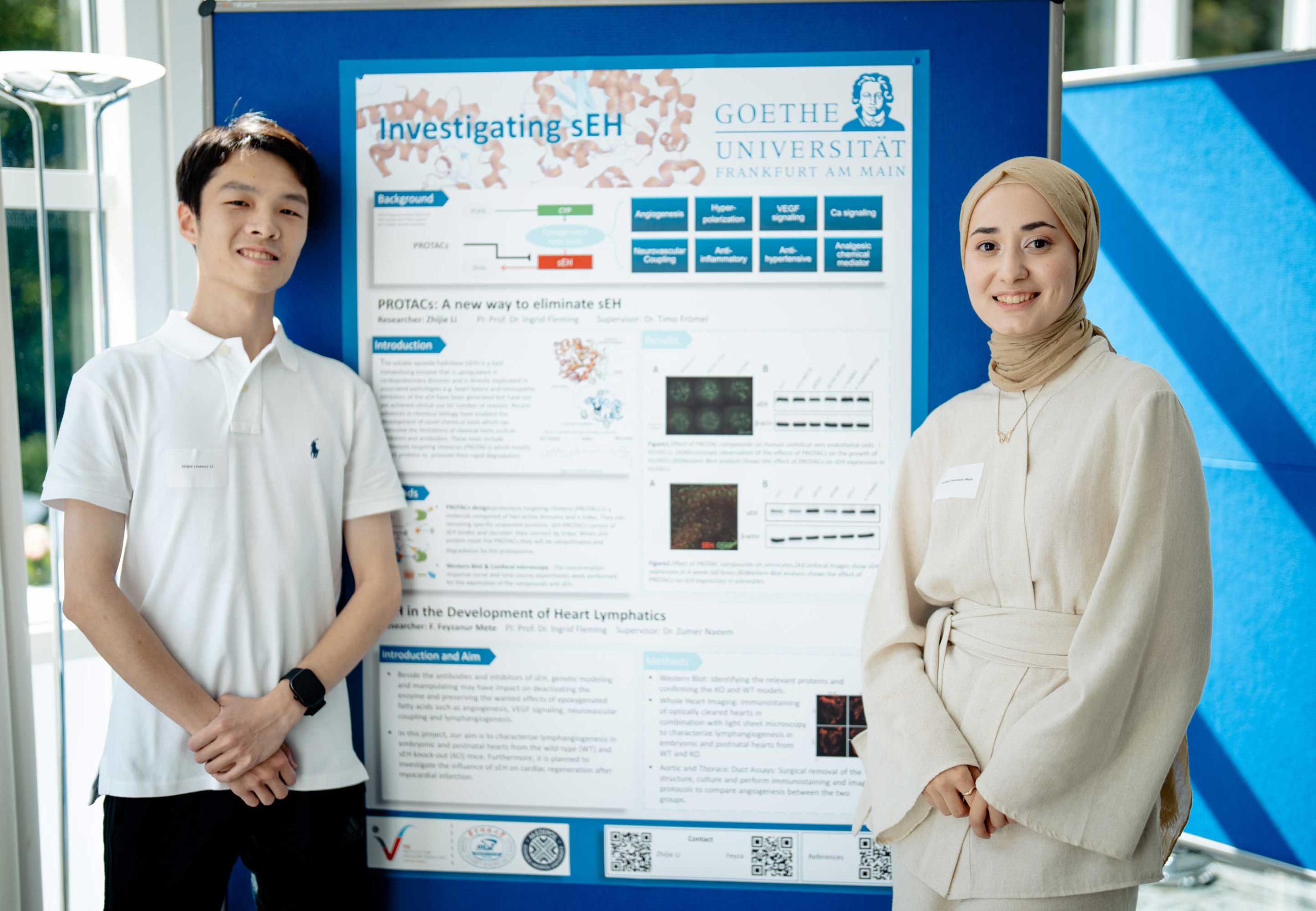
EXPLORE-ing the universe and Germany: six GREP fellows from Canada
In early July, a group of six students from York University and the University of Alberta, their professor and his family arrived in Frankfurt for their very own two-month GREP experience. This particular group of scholars is able to benefit from the existing close ties between the three universities. Having worked with Prof. Sean Tulin herself in Canada, Prof. Laura Sagunski – who researches and teaches at Goethe University’s Institute for Theoretical Physics – realized the research seminar “EXPeriential Learning Opportunity through Research and Exchange” (EXPLORE) together with her German colleague Prof. Jürgen Schaffner-Bielich and colleagues at the Canadian partner Universities. Following the Covid-related virtual beginnings, the cooperation has since continued to grow.

Like most of the other GREP fellows, the Bachelor’s and Master’s students are also staying at the guest house of the Berufsförderungswerk e.V. in Bad Vilbel. One of them is Zeinab Imani. The student from York University simulates how the universe looked at different eras to track the evolution of structures and the distribution of dark matter. “After the big bang, the universe was much smaller than it is now. We know it is expanding at a very accelerated rate,” she said, adding that, “this expansion results in matter getting more diffuse, and in densities changing. What I am trying to do is create a model that we can use on a computer to simulate the distribution and density of matter.” Such a model, she says, would save not only time, but also an immense amount of costs.
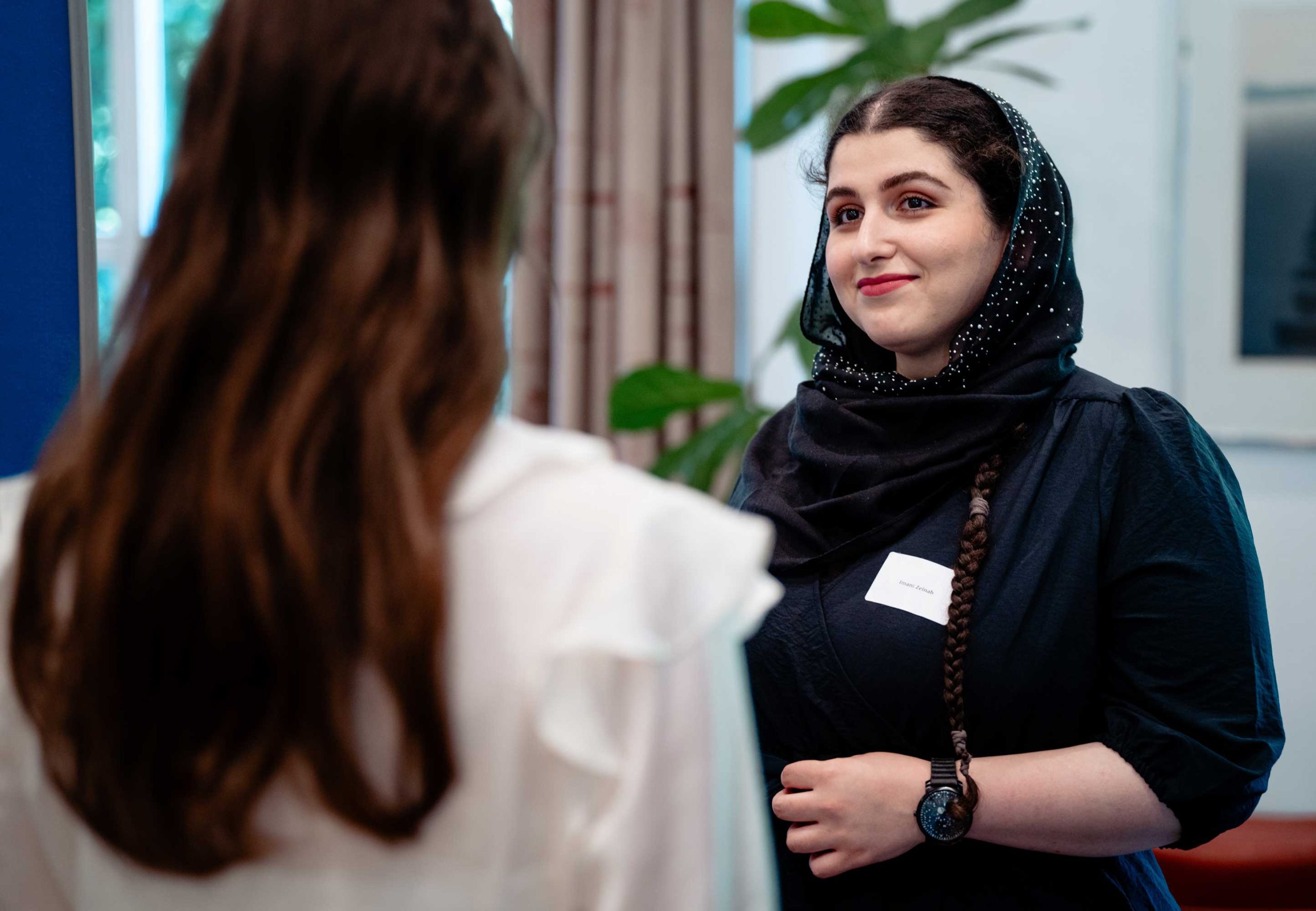
Her classmate, Lauren Morley, explains that her research focuses on mini-halos and simulations, adding that she will continue her work with fellow York University students while she is here. Together, she says, they want to measure the conditions that prevail when a star collapses into a black hole. Sian McGarva of the University of Alberta is more interested in the physics of stars, particularly dark stars, made out of dark matter.
What attracted them to astrophysics is the mystery of it, both agree. Lauren Morley: “I have been interested in dark matter since a young age. We don’t know what it is, what it is made up of, what it does or what forces it interacts with. This mystery fascinates me. I am also very interested in black holes, and was inspired by Stephen Hawking, who I read when I was younger.”

Hemish Ahuja is also fascinated by black holes, or more precisely the shadows around them. The York University undergraduate is studying where the light emitted by the surrounding stars is absorbed by the black hole, and where it is bent by gravity. “Using the black hole’s shadow, we can learn more about the quantum nature of gravity,” he explains. Like his peers, he was drawn to the mystery of the subject, though his journey took him through philosophy: “I wanted to know more about why I am here, where I came from. It’s been a long journey, and this research stay is just the latest part of it.”
The current group of GREP scholars comes from partner universities located in all corners of the world: Brazil (University of São Paulo), Canada (Universities of Alberta, Toronto and Saskatchewan, as well as York University and Trinity Western University), China (Huazhong University of Science and Technology), Israel (Tel Aviv University and Hebrew University of Jerusalem), as well as Turkey (Istanbul Medipol University and Turkish-German University).
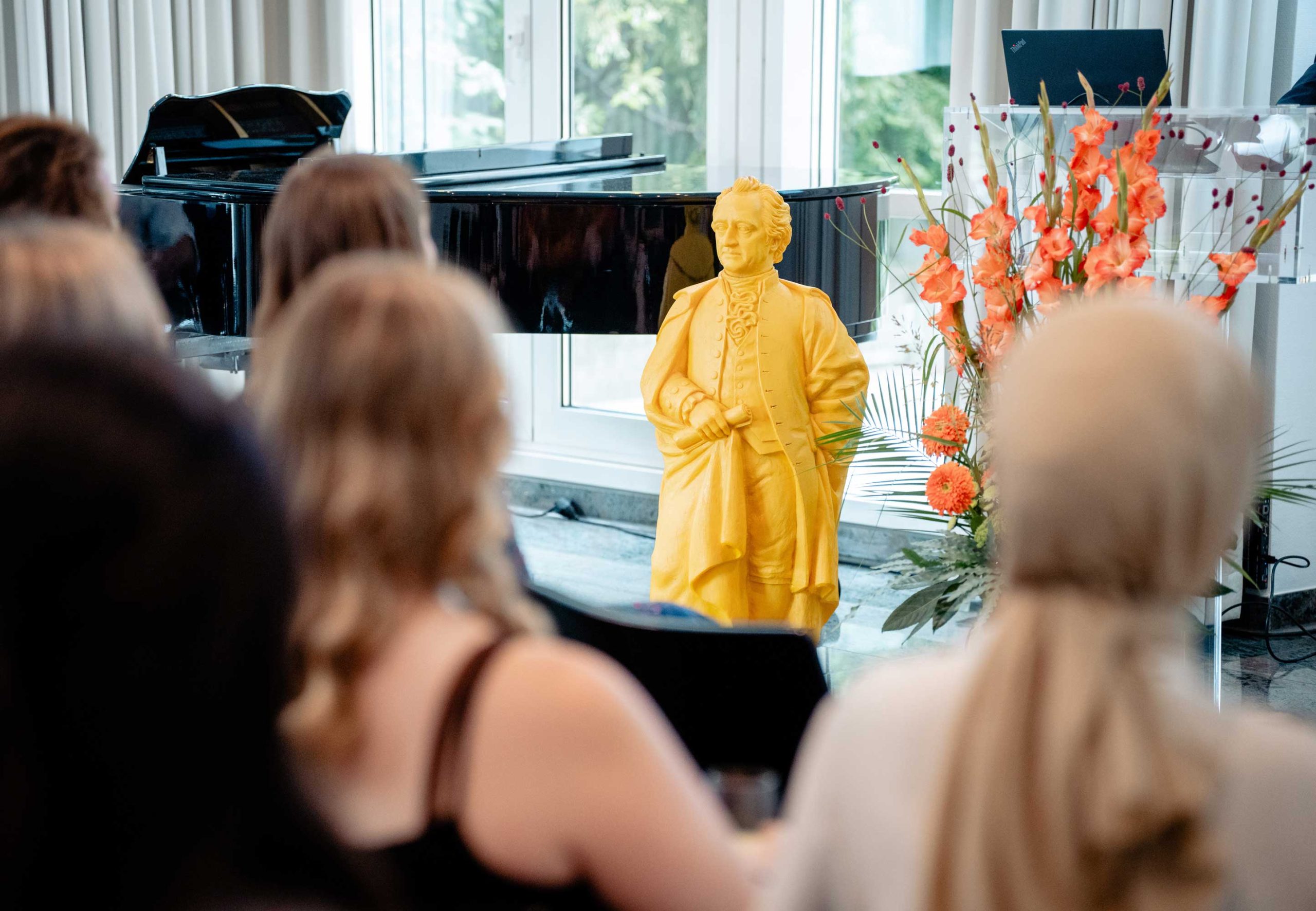
The Goethe Research Experience Program offers top international bachelor‘s and master’s students the opportunity to conduct research at Goethe University for 2-6 months. Participants work with interdisciplinary research groups and may complete a thesis in the humanities and social sciences or conduct a laboratory visit in the natural sciences. Benefits include housing, access to university facilities, German language courses at the Goethe-Institut Frankfurt, and a unique social program. Scholarships are awarded three times a year for a visit during the fall, spring or summer intake and are funded by the Adickes Endowment Fund and the Johanna Quandt Jubilee Fund.
For more information, visit: http://www.goethe.link/grep








